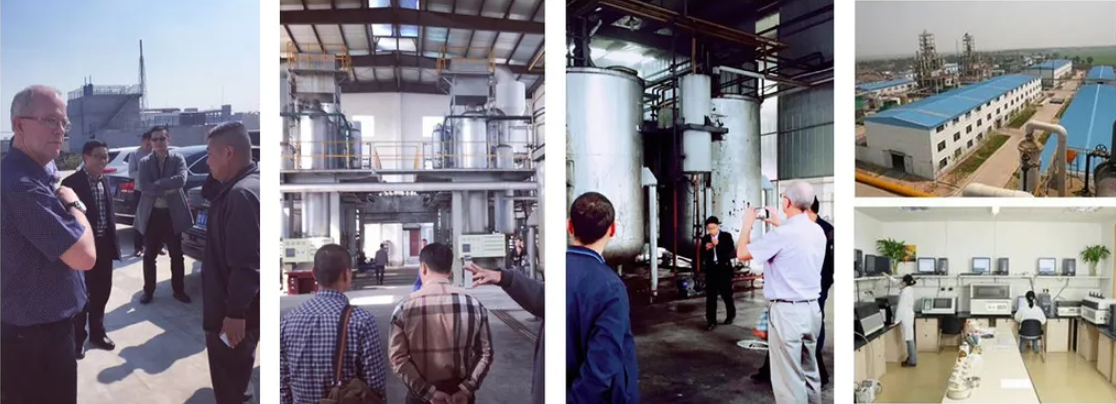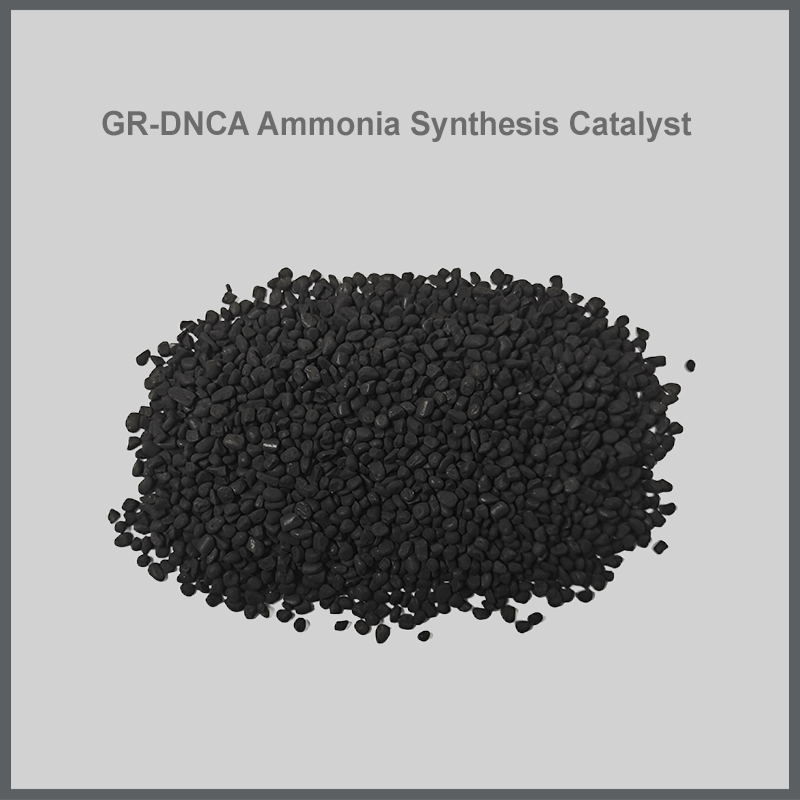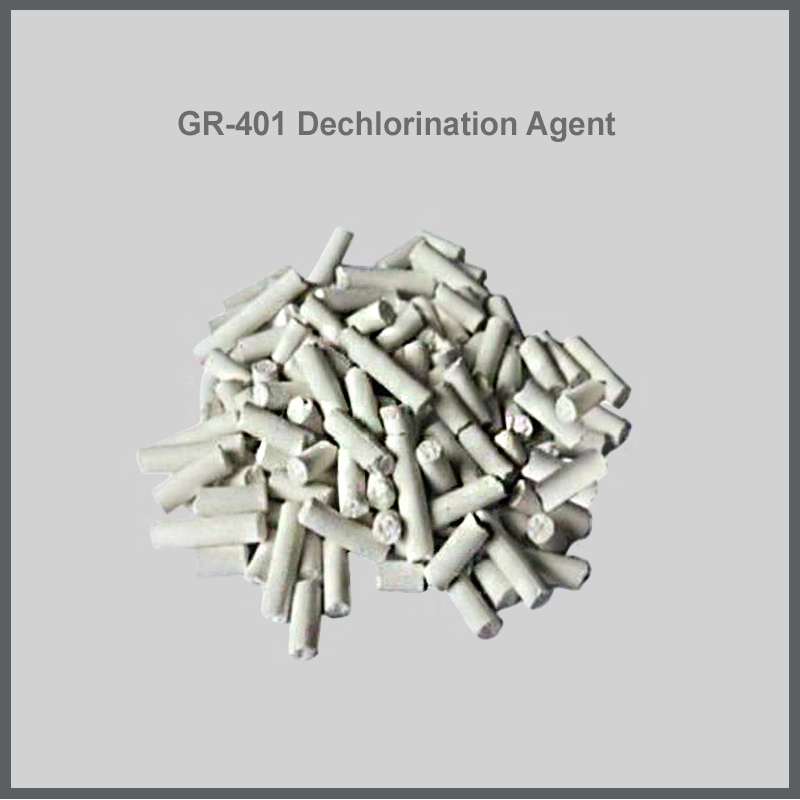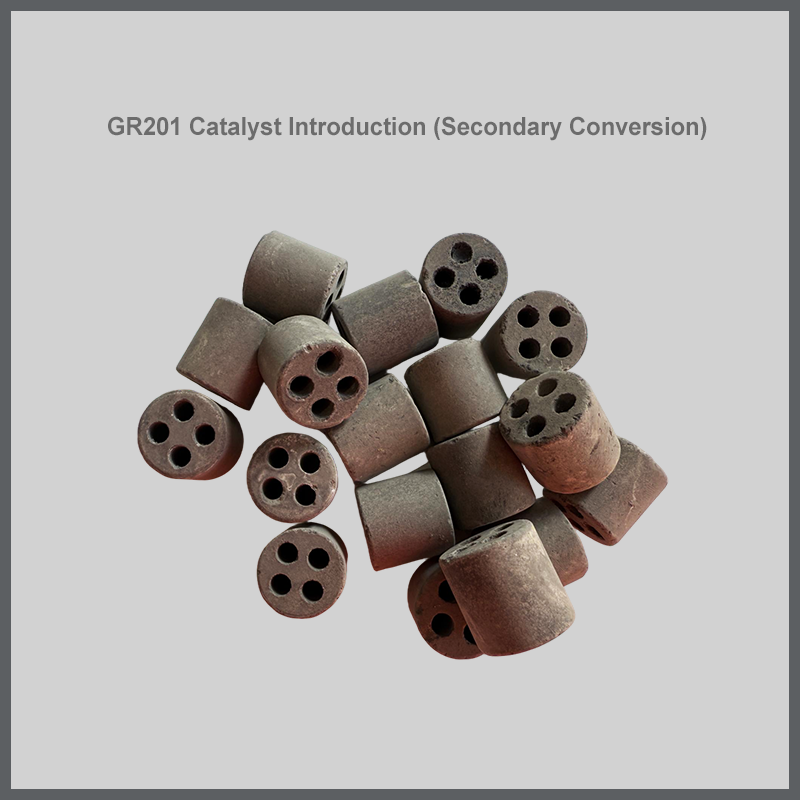products
GR301/GR302 primary and mixed raw material catalysts

◼PRODUCT DESCRIPTION
GR301/GR302catalysts are suitable for steam reforming processes that use LPG, various refinery dry gases, natural gas, etc. as raw materials to produce hydrogen, methanol synthesis gas, and ammonia synthesis gas. GR301is installed in the upper half of the reformer tube, and GR302is installed in the lower half of there former tube. The two are generally loaded in a1:1ratio.
GR301/GR302catalysts have the characteristics of large geometric surface, low bulk density, and good heat transfer effect. The catalyst has high activity,low bed resistance, and high operating flexibility.
◼Core design concept
GR301 (Upper Stage Catalyst): Operating in a relatively low-temperature environment, this catalyst provides initial feedstock cracking and initiates the conversion reaction. Designed for high activity and resistance to carbon deposition, it effectively handles high-carbon hydrocarbons that may be present in the feedstock, preventing cracking and carbon deposition, and laying a solid foundation for subsequent reactions.
GR302 (Lower Stage Catalyst): Operating in the lower, high-temperature zone of the reactor (typically exceeding 800°C), this catalyst provides the majority of deep CH4 conversion. Designed for exceptional thermal stability and high-temperature creep resistance, it maintains a stable active structure even in harsh, high-temperature environments, ensuring a deep reaction and minimizing residual methane content at the outlet.

◼Significant product features and advantages
Excellent Macrostructure and Heat Transfer Performance
Large Geometric Surface Area: Utilizing a unique pore structure and design (such as a porous hub shape and grooved profiled strips), the catalyst significantly increases the contact area between the catalyst and the process gas, providing ample channels for efficient diffusion of reactants and products.
Low Bulk Density: Optimized catalyst density is achieved while maintaining mechanical strength. This not only reduces unit volume loading costs but, more importantly, minimizes bed pressure drop and provides improved support for the weight of the furnace tubes.
Excellent Heat Transfer: The optimized structure and low density ensure that heat within the reformer tubes is more efficiently transferred to the reactants through the catalyst bed, resulting in a more uniform temperature distribution on the tube wall and eliminating localized hot spots, thereby protecting the tubes and extending their life.
Excellent catalytic performance
High Activity: Rich in active sites and well-dispersed, it ensures high conversion rates under a wide range of process conditions. It is particularly effective in reducing residual methane (CH4) content in the outlet gas, thereby improving syngas yield and quality.
Low Bed Resistance: The unique geometry and mechanical strength design ensure that the catalyst maintains its integrity even after long-term operation, effectively preventing pulverization and clogging, maintaining a low bed pressure drop, and thus reducing unit energy consumption.
High Operational Flexibility: It offers enhanced adaptability to feedstock composition, water-to-carbon (S/C) ratio, and load fluctuations. Even with fluctuations in feedstock impurities (such as trace olefins) or load adjustments, it maintains stable operation, demonstrating excellent carbon resistance and operational stability, ensuring flexible production.
Strong Mechanical and Thermal Stability
Utilizing a high-strength carrier and advanced preparation technology, the catalyst exhibits excellent wear and crush resistance, reducing physical wear during handling and operation.
GR302 is specifically optimized for high-temperature environments, featuring an extremely low coefficient of thermal expansion and high-temperature creep resistance. It effectively resists physical deformation and sintering deactivation at high temperatures, ensuring long-term operation.

◼Application Benefit Summary
Using the GR301/GR302 series catalysts can provide you with:
Higher conversion efficiency: Increased hydrogen or syngas production.
Longer operating cycles: Excellent carbon resistance and thermal stability extend catalyst life.
Lower energy consumption: Smaller bed pressure drop directly reduces compressor power consumption.
Improved safety: Uniform heat transfer protects the reformer tubes and reduces the risk of unplanned downtime.
Greater adaptability: Easily adapt to changes in feedstock sources and loads, ensuring production flexibility.

Depending on the catalyst's form (e.g., pellets, strips, flakes), strength, and customer requirements, the following packaging options are commonly used:
1. Sealed Steel Drums
These are typically standard 200-liter (53-gallon) steel drums lined with multi-layer moisture-proof plastic bags (commonly polyethylene bags). A sealing ring is installed between the bag opening and the drum lid to ensure airtightness.
Advantages:
High strength: Effectively protects against impact and crushing during transportation, protecting the catalyst from mechanical breakage.
Excellent sealing: Perfectly protects against moisture, dust, and other gaseous contamination.
Easy stacking: Convenient for warehouse storage and container transportation.


2. Flexible FIBCs
Used for large-volume shipping, these large bags are made of materials such as polypropylene (PP) and typically feature a moisture-proof inner film, top straps, and a bottom discharge port.
Advantages:
High packaging and unloading efficiency, suitable for large-scale loading.
Lightweight, reducing shipping weight.
Relatively low cost.
Disadvantages:
Not as protective as metal drums, susceptible to snags and punctures.
Moisture resistance depends on the quality of the inner film, making them less suitable for long-term storage.
Requires use with pallets and cannot be stacked directly.
Applications:
Catalysts (such as certain adsorbents and protective agents) used in large quantities and with relatively less stringent packaging requirements.



Our company is a high-tech enterprise specializing in the research and development, production, and technical services of industrial catalysts. We are committed to providing efficient and reliable catalytic solutions and products for the global petrochemical, fertilizer, coal chemical, and new energy sectors. We possess advanced R&D centers and production lines, and our core technical team has decades of industry experience, possessing profound theoretical knowledge and extensive practical experience.
We are customer-oriented, providing not only high-quality products but also comprehensive technical support, catalyst loading guidance, activity assessment, and operational optimization services throughout the entire process. We are a trusted partner for our customers, working together to promote green, safe, and sustainable industrial production.


Request a Quote
Related Recommendations








